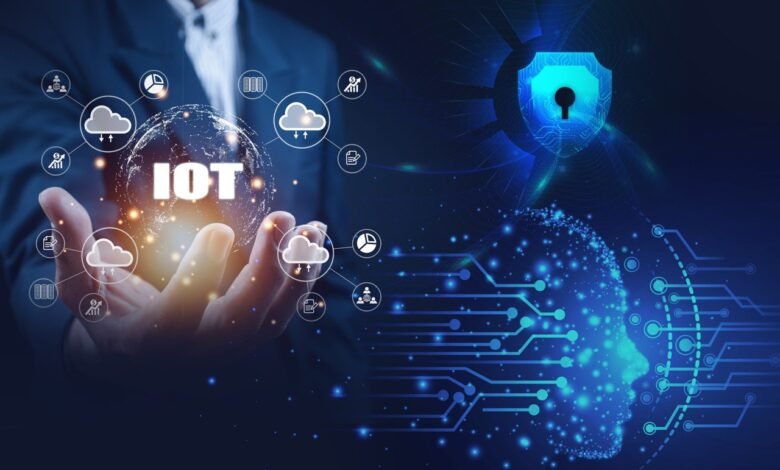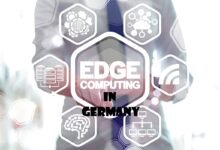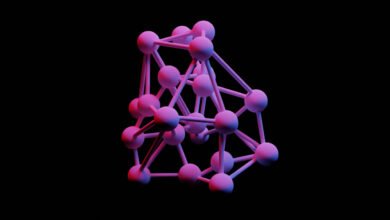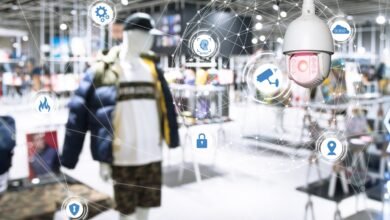Iot and AI Integration: Tips for Seamless Collaboration.

In the realm of technological advancement, the integration of Internet of Things (IoT) and Artificial Intelligence (AI) stands as a pivotal frontier, revolutionizing various industries with its transformative capabilities. As organizations strive to harness the power of data and automation, the seamless collaboration between IoT and AI emerges as a beacon of innovation and efficiency. This article delves into the intricate fusion of IoT and AI, offering insights, strategies, and tips to facilitate a harmonious integration process for businesses and enterprises seeking to leverage the synergies between these groundbreaking technologies.
The convergence of IoT and AI epitomizes the epitome of modern technological prowess, where interconnected devices and intelligent algorithms converge to redefine how we perceive and interact with technology. As the digital landscape evolves, the integration of IoT and AI holds the promise of unlocking new realms of productivity, insight, and efficiency across diverse sectors ranging from manufacturing and healthcare to smart cities and agriculture. By exploring the nuances of this integration and providing actionable guidance, organizations can embark on a journey towards unlocking the full potential of IoT and AI, ushering in an era of unparalleled innovation and collaboration.
Iot and AI Integration
Definition of IoT and Artificial Intelligence
IoT refers to the interconnected network of physical devices, vehicles, appliances, and other objects embedded with sensors, software, and network connectivity, enabling them to collect and exchange data. On the other hand, Artificial Intelligence involves the development of computer systems that can perform tasks that typically require human intelligence.
Growing Importance of Integration
As technology advances, the integration of IoT and AI becomes increasingly vital. The combined power of real-time data from IoT devices and the analytical capabilities of AI opens up new possibilities across various industries.
Benefits of Integrating IoT and Artificial Intelligence
Improved Efficiency
The collaboration between IoT and AI streamlines operations by automating tasks and processes. This leads to increased efficiency and reduced human intervention, allowing organizations to focus on strategic decision-making.
Enhanced Decision-Making
AI processes vast amounts of data collected by IoT devices, providing actionable insights for informed decision-making. Businesses can leverage this synergy to make data-driven decisions promptly.
Predictive Maintenance
Integrating IoT and AI enables predictive maintenance, preventing equipment failures by analyzing data patterns. This results in cost savings, as organizations can address issues before they escalate.
Real-time Data Analysis
The real-time data generated by IoT devices is processed instantly by AI algorithms. This capability facilitates quicker analysis, enabling businesses to respond promptly to changing conditions or emerging trends.
Challenges in Integrating IoT and AI
Security Concerns
The integration of IoT and AI raises security challenges, as the increased connectivity creates more entry points for potential threats. Robust security measures are crucial to protect sensitive data and ensure the integrity of the interconnected system.
Compatibility Issues
Different IoT devices and AI platforms may not be inherently compatible. Organizations must navigate compatibility challenges to ensure a seamless integration that maximizes the potential benefits.
Data Privacy
Collecting vast amounts of data from IoT devices requires careful consideration of privacy issues. Implementing transparent data privacy policies is essential to build trust among users and stakeholders.
Tips for Seamless Collaboration
Establishing Clear Objectives
Before integration, clearly define the objectives of combining IoT and AI. Whether it’s improving efficiency, reducing costs, or enhancing user experience, having a clear roadmap ensures a focused and successful integration.
Choosing Compatible Technologies
Select IoT devices and AI platforms that are compatible with each other. This minimizes integration challenges and ensures a smooth collaboration between the two technologies.
Ensuring Data Security
Prioritize robust security measures to safeguard data and prevent unauthorized access. Encryption, authentication, and regular security audits are crucial components of a secure IoT and AI integration.
Continuous Monitoring and Updates
Regularly monitor the integrated system’s performance and implement updates as needed. This proactive approach ensures that the collaboration remains effective and resilient to emerging challenges.
Real-world Examples of Successful Integration
Smart Home Automation
The integration of AI and IoT has revolutionized smart home automation. Devices like smart thermostats and security cameras utilize AI algorithms to learn user behavior, optimizing energy consumption and enhancing security.
Industrial IoT and AI in Manufacturing
In manufacturing, AI-powered robots and IoT sensors collaborate to optimize production processes. Predictive maintenance and real-time monitoring contribute to increased productivity and reduced downtime.
Future Trends in IoT and AI Integration
Edge Computing
In the ever-evolving landscape of technology, Edge Computing stands out as a revolutionary concept, reshaping the way we handle data. At its core, Edge Computing is about bringing data processing closer to the source, a paradigm shift from traditional centralized models. This article explores the key aspects of Edge Computing and its transformative impact on data processing and real-time decision-making.
Proximity to Data Sources
Edge Computing’s primary focus is on processing data near its point of origin. Unlike conventional cloud computing models, where data is sent to centralized servers for analysis, Edge Computing brings computation closer to the devices generating the data. This proximity minimizes latency, ensuring faster response times critical for applications requiring immediate actions, such as autonomous vehicles and industrial automation. The ability to process data at the edge enhances efficiency and enables quicker decision-making.
Reduced Latency
One of the paramount advantages of Edge Computing is the significant reduction in latency. By processing data locally, closer to the point of collection, Edge Computing eliminates the delays associated with transmitting data to remote servers. This is particularly crucial in scenarios where real-time responses are imperative, like in healthcare applications, where prompt decisions can be a matter of life and death. The reduced latency ensures that critical operations can be performed swiftly, opening up possibilities for new applications and enhancing the overall user experience.
Bandwidth Optimization
Edge Computing contributes to more efficient use of bandwidth by processing data locally. This not only reduces the strain on network infrastructure but also optimizes bandwidth usage for applications that require constant data transmission. In scenarios where bandwidth is limited or expensive, Edge Computing offers a practical solution by minimizing the volume of data that needs to be transmitted over the network.
Enhanced Privacy and Security
With Edge Computing, sensitive data can be processed locally, addressing privacy and security concerns associated with transmitting data to centralized cloud servers. This decentralized approach means that critical information can stay within the confines of a local network, reducing the risk of unauthorized access and potential security breaches. This aspect is particularly appealing in industries such as finance and healthcare, where data privacy is of utmost importance.
5G Connectivity
The widespread adoption of 5G connectivity will further enhance the collaboration between IoT and AI by providing faster and more reliable communication between devices and systems.
AIoT (Artificial Intelligence of Things)
The evolution of AIoT, where AI capabilities are embedded directly into IoT devices, is a promising trend. This integration allows devices to make autonomous decisions based on real-time data.
Conclusion
How does AI enhance the efficiency of IoT devices?
AI processes real-time data from IoT devices, automating tasks and optimizing operations for increased efficiency.
What are the security concerns associated with integrating IoT and AI?
The increased connectivity poses security challenges, emphasizing the need for robust measures like encryption and authentication.
Can AI and IoT be integrated into everyday life?
Yes, examples like smart home automation showcase how AI and IoT can seamlessly integrate into everyday life.
What is the role of 5G in enhancing IoT and AI collaboration?
5G connectivity ensures faster and more reliable communication between IoT devices and AI systems, enhancing their collaboration.
How can organizations ensure data privacy in IoT and AI integration? Implementing transparent data privacy policies and security measures ensures the protection of sensitive data in the integrated system.










